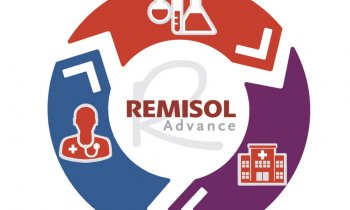ICU
Patients on ventilators often able to communicate
A new study reveals that more than half of patients in intensive care units (ICU) using ventilators to help them breathe could benefit from assistive communication tools.
The study found that 53.9 percent of the 2,671 mechanically ventilated patients screened met basic communication criteria and could potentially benefit from the use of assistive communication tools and speech language consultation. These tools could be as simple as a notepad and pen that would allow a patient to write requests and questions.
"Our findings challenge the commonly held assumption of many clinicians and researchers that these patients are unable to communicate or participate in their care," said Mary Beth Happ, co-author of the study and distinguished professor of nursing at The Ohio State University.
"Establishing lines of communication is the first step in a patient being able to make his or her needs known and have accurate symptom assessment and management, and contributes to an overall better patient experience. We know from interviews with patients who remember their critical care experience that the inability to communicate is anxiety producing and, in some cases, terrifying," said Happ.
The article appears in the January/February 2015 issue of the journal Heart & Lung and is co-authored with Happ's colleagues from the University of Pittsburgh.
The study involved patients at two hospitals who used mechanical ventilation over a two-year period. The study classified patients as meeting basic communication criteria if they were alert and responsive to verbal communication from clinicians for at least one 12-hour shift while receiving mechanical ventilation for two or more days. While the study indicates that many patients do have the ability to communicate, that does not mean that communication is being properly facilitated, said Happ.
"We need to change the culture of care teams in the ICU to better address communication support needs," she said. "We often do not have the necessary tools at the bedside, and it does require a certain skill level on the part of the clinician to be able to assist patients without both parties becoming very frustrated."
The authors note that as critical care clinical practice moves toward less sedation, which promotes wakefulness and early mobilization during mechanical ventilation, the proportion of awake and potentially communicative patients is likely to increase - meaning an increased need for communication support.
"We have known that this is a problem for over 30 years, but it is an area that has been largely ignored because it's a need that crosses disciplines. It becomes an issue of 'who's responsible?'" explains Happ.
She says the next steps for identifying a solution are to design implementation programs for care teams that can fully address communication needs for mechanically ventilated patients while also measuring patient care outcomes related to this practice change.
Source: Ohio State University
28.01.2015











